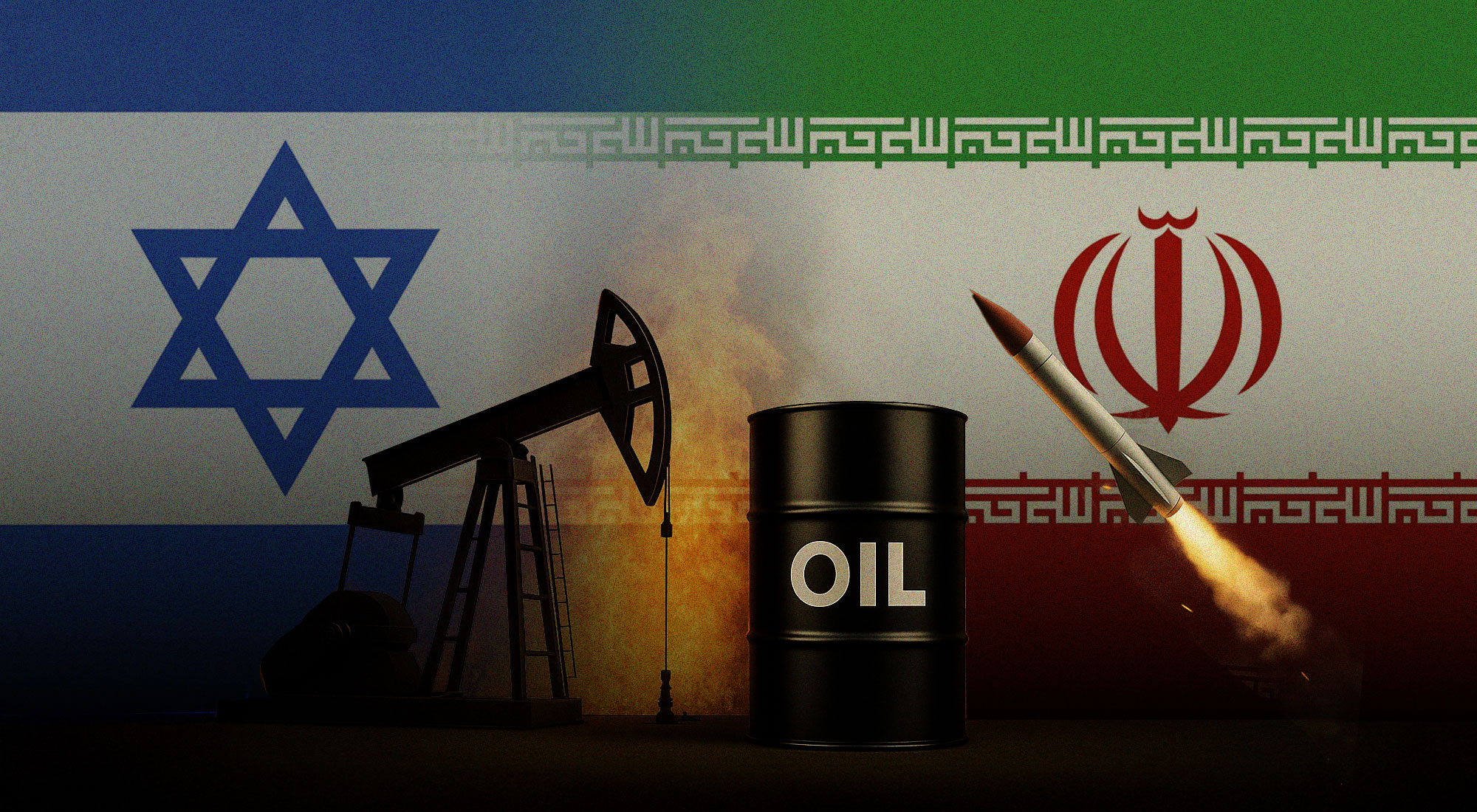The impact of the Covid-19 crisis in the world economy has increasingly focused the attention on the health of global trade, debt, and the potential upcoming financial and economic alliances. This concern has recently been expressed at the top level of global governance discussions, such as the World Economic Forum, suggesting in October 2020 the need to recover from the pandemic’s effects through a great reset of the international system.
At the core of this debate, leading economic organizations such as the World Bank and the International Monetary Fund (IMF), have historically warned about the necessity of a “New Bretton Woods,” responding to concerns over the future of the historical economic architecture, and the potential role that new emerging economic powers can play in this new agreement.
Kristalina Georgieva, Managing Director of the IMF since 2019, has expressed the same concerns about the future of international economic governance. She openly stated in October 2020 that the impact of Covid-19 had cornered the global economy to a similar moment as that witnessed at the end of the Second World War. Such trends explain the increasing interest of the leading financial institutions to assess the global economy’s future and react to the role of rising economies eager to participate or replace the decision-making bodies of global institutions such as the World Bank or the IMF.
The interest of peripheric or emerging economies to rearrange the global institutional economic architecture to gain representation or influence has been a topic often isolated from customary discussions directed to assess the future of global governance. However, the reality shows that the recent decades have extensively reconfigured the global balance of power, releasing the overarching influence of countries such as China, Singapore, Brazil, India, South Korea, or Saudi Arabia.
Over time, this increasing trend has naturally put pressure on customary economic international institutions such as the World Bank and the IMF, whose original governance structure dates back to 1945. Although these organizations opened the floor for the development of financial multilateralism and the increasing growth of the economic liberal international order, the malfunction of their governance structure and their rarely and slow attempts to reform the participation of emerging economies has led to the reinvention of the global system, and the increasing awareness of numerous territories to develop and to launch new alliances.
A background and a few historical trends
The dominant international economic system was created to avoid financial instability, and political division originated before and during the Second World War. The Bretton Woods meeting in New Hampshire’s main goal was to avoid the implications of protectionism over the global economy, the gold standard’s limitations, and the currency devaluation of the economies harmed during the two confrontations (Lipton, 2019). The 1945 foundational meetings defined the voting weight and quotas following the demands of the most influential members. This is how, in 1946, during the inaugural meeting, the management of the IMF and the International Bank for Reconstruction and Development protected the political and economic influence of countries such as England, the United States, USSR, and France (Mikesell, 1994).
Over time, institutional patterns of unequal influence in the executive boards defined the members’ burdens and benefits during the 75 years of operation. At the IMF, for instance, loans tend to be “larger and more frequent when a country has a bigger quota and more professional staff (…) and when a country is more connected politically and economically to the United States and major European countries (J.Barro & Jong-WhaLee, 2005).” Such settings reinforced the processes of normative under-representation of peripheric countries and a clear reason for emerging economies to assess and develop international solutions directed to better performance based on their interests.
Over time, the asymmetries implied the concentration of power by single players at the IMF or the World Bank board and the United Nations. In such cases, influential countries’ bargaining power eased support from small territories looking for retribution by voting according to the average G-7 nation. Thus, the governance structure eroded the original credit union nature of the IMF, producing a differentiation between lenders and borrower’s countries (Rowlands & Bird, 2006). Since 1945, the IMF’s historical limitations and the World Bank’s governance structure brought attention to emerging national economies that also adopted the free market economic system after the Cold War.
Indeed, the fall of the Berlin Wall and the industrial development of China, Russia, India, and Brazil, rapidly changed global governance’s political landscape, inspiring efforts for full regional integration at the IMF or the World Bank’s margin. Finally, in different regions, attempts to create transnational financial organizations with regional shareholders acquired popularity with the foundation in 1954 of the African Development Bank Group (ADB), The European Investment Bank (EIB) in 1958, the Inter-American Development Bank in 1959, the Asian Development Bank (ADB) in 1966, or the Islamic Development Bank (IsDB) in 1973, among others.
The most recent step to create a set of global alternative economic organizations goes back to the 2006 United Nations General Assembly, where Brazil, Russia, India, and China’s foreign ministers met consistently to draft the agreement for launching the first “BRIC” Summit in 2009. The summit’s goal was to conduct annual high-level meetings between major emerging national economies to set the ground for an international political and economic alliance. The summit also served as a public forum for the leading emerging economies to demand concrete steps agreed in the previous Doha rounds of the World Trade Organization (WTO). Among them was the demand to reduce historical agricultural subsidies funded by the European Union and the United States. Thereby, the international alliance of the economies that launched the BRIC – later including South Africa as the fifth member state (BRICS) – called for the return of the Doha negotiations that were broken in 2008 after seven years of ministerial meetings.
The failed Doha rounds explained the active opposition of China, Russia, India, Brazil, and South Africa to the evolution of global trade barriers in economies that relied extensively on the agricultural sector to better perform in the international markets. This clarifies why, the year after the Round, the five members began talks to launch the BRICS global political alliance complementing the summit and creating at least two international economic organizations, The New Development Bank (NDB) and the BRICS Contingent Reserve Arrangement (CRA).
Emerging economic power alliances
Among the different regional economic institutions created after the 2008 financial crisis, the New Development Bank and the Contingent Reserve Arrangement (CRA) represent the most organized scheme to replace customary institutions amid liquidity or financial pressures. Entering into force by 2015, the two organizations provide an alternative framework mimicking the nature of the World Bank and the IMF but allowing their members to have equal or similar voting rights and a more accessible source of leverage to launch regional or transnational development projects.
The shareholding structure of The New Development Bank is distributed equally among its five members. Brazil, Russia, India, China and South Africa have an equal 20 percent shareholding and 20 percent voting rights. Over time, the organization rapidly increased the amount of investment directed mainly to infrastructure projects, among them, with a total of 30 approved loan proposals by 2019 (NDB, 2019).
Figure 1
Main International/Regional Financial Institutions

Following the Bretton Woods Institutions concept, the BRICS decided to complement the initiative of the New Development Bank with the inauguration of the Contingent Reserve Arrangement (CRA), a framework to ensure liquidity and precautionary instruments for the balance of payments of the five territories. The Reserve’s goal is to protect amid global liquidity pressures, ensuring currency stability in Brazil, China, India, and Russia, but mainly China, which is rapidly overtaking the United States’ economic size.
According to the 2017 World Bank International Comparison Program Report, China’s 2017 GDP ($19.617 trillion) already overtook the US GDP ($19.519 trillion) in purchasing power parity (PPP) terms, becoming the largest economy on the planet (WB, 2020). This quality of the Chinese economy may predict a potential shift in the future global distribution of power. In such circumstances, the BRICS decision to launch in 2015 a CRA, followed the IMF’s lessons, protecting the shareholders’ currencies and providing a long-term approach to economic governance.
Moreover, the Reserve’s structure can better harmonize the interests of the emerging nations with the biggest player of the framework, China, which already owns 39.95 percent of the voting rights at the CRA’s executive board. This is because, unlike the New Development Bank agreement, the CRA assigns voting rights to each one of the members according to their capital contribution.
With the establishment of the New Development Bank and the CRA in 2015, China also initiated negotiations to launch the Asian Infrastructure Investment Bank. This decision was based on the assumption that the multilateral development of the BRICS can further be complemented with a healthier regional development institution working in areas such as “social infrastructure.” The AIIB president commonly endorsed this concept while participating in high-level discussions to provide loans to tackle the Covid-19 pandemic in Asia (Bloomberg, 2020).
The AIIB was inspired by the World Bank’s original concept, inherited from the International Bank for Reconstruction and Development of 1944 after the Second World War. With a starting capital of US$100 billion, the AIIB reserves represent half the financial capacity of the contemporary World Bank, rapidly becoming a potential rival to the Bretton Woods organizations and rearranging the influence of China in Asia and Oceania.
By October 2020, the bank also extended a loan of $300 million to Russian Railways and ensured a strategic alliance with the regime by appointing Konstantin Limitovskiy as Vice President of Investment Operations. Limitovskiy was a graduate of the Russian Finance University and Former Deputy Chairman of the Eurasian Development Bank. By 2020, the bank’s rapid growth reached 103 member states, with 21 prospective members to be included in the upcoming future.
A short outlook of the future
The seismic events of the Covid-19 pandemic have raised the attention over the rising influence of China and the United States’ potentially lagged capacity to perform living up to the rest of the world or the market’s expectations. Roughly 11 months after the Wuhan outbreak, in contrast with the United States, the Chinese economy ensured the third quarter of GDP growth and a projected yearly growth above 2 percent, becoming the only economy globally with a positive ascent (IMF, 2020).
Figure 2
Global growth projection, real GDP

Source. IMF (Andrea Shalal, 2020)
International economic organizations and multilateral financial institutions are often understood as entirely technical. Yet, their role in assessing and attending to localized demands implies a direct political intervention in regional matters. This suggests how global economic governance can be explained by defining each institution’s subscribed capital and assessing the influence and prospective political future of regions that increasingly rely on their own international organizations.
A necessary assessment of the upcoming future of international economic governance can be found in the potential of regional financial entities and the relation between lenders and borrowers over the last decade. This is because the 2009 financial hit revealed the 2000 US mortgage and global banking bubble, strengthening regional alliances to ensure a more stable financial regional architecture. As such, the demands of non-concessional loans from the IMF over the last decade have shown a stable but decreasing trend since 2013 that could be related to the demands of borrowers resorting to alternative funding sources.
This trend regarding the relation of developing borrowers with the IMF is relevant considering that IMF non-concessional rates are almost “always lower than what countries would pay to raise financing from private markets,” (IMF, 2020) being a customary source for emerging market countries. In contrast, lending approvals of regional economic lenders such as the Asian Development Bank have almost doubled within the 2007-2017 decade, jumping from $11.08 billion in 2007 to $17.46 billion by the beginning of 2017. (ADB, Asian Development Bank, 2017)
Figure 3
Nonconcessional Loans outstanding FY 2010-2019

Source. IMF Finance Department
A similar trend can be found in the relation between lenders and borrowers in Latin America. The Interamerican Development Bank (IDB) has attended requests from their country members who prefer to replace customary international lenders such as the IMF or the World Bank. By 2018, loan and guarantee approvals from the IDB reached the second-highest level in their 60-year history. The multilateral organization’s stability is relevant considering the difficulties of the region over the last two decades. Most recently, some countries in the region, such as Argentina, are looming to follow the inflationary steps and recession of nations like Venezuela.
Figure 4
Loan approvals by type – 2014 to 2018 ($ billion)

Source. (IDB, 2019)
The gradual shift of regional blocs to emerging international economic organizations as prime option lenders and the pandemic’s effects on the global economy raises questions about the international monetary system’s future and the balance of power between the eastern and the western hemisphere. In general, it looks like the pandemic’s major hit has been received by the western hemisphere, while Asian countries such as China, Hong Kong, or Singapore have overcome the impact (Lee, 2020) (Elegant, 2020).
By far, the United States has implemented the most extensive stimulus package to relieve the pandemic’s economic impact with up to $3 trillion programs during the current year. In the case of China, and especially by the beginning of the pandemic, the country adopted a more conservative financial stimulus, reaching up to US$ 560 billion, followed by more robust social measures implemented at the beginning of the outbreak. The contrast between the two nations demonstrates how Beijing focuses on keeping an eye on the supply of the international demand for goods and services. At the same time, Washington aims to calm the concerns over a strong US dollar (DW, 2020).
Conclusion
The dollar remains by far the main world reserve currency. Since the end of the Bretton Woods convertibility system, this status has been sustained, allowing the country to run large account deficits supported in the international demands for dollars (Eichengreen, 2008). Over time, the country has remained the main liquidity globally provider, running investment surpluses by issuing dollars held by foreign banks (Eichengreen, 2004).
This setting has helped the country overcome the events of 2020 while increasing the monetary supply to boost the pandemic-hit economy. However, the increasing deficit is starting to raise questions about the future of the global economy and how a transition of new emerging superpowers can change the balance of power and the prospects of global economic governance (Worrachate, Barton, & Greifeld, 2020).

Source. Bank for International Settlements
In recent years, China has maintained an unusually low price of the yuan while launching reasonable bold initiatives in the international community to set emerging transnational organizations. Among them, the further development of multilateral arrangement institutions, such as the Contingent Reserve Arrangement, or emerging regional organizations such as the Asian Development Bank or the Asian Infrastructure Investment Bank, points to an institutional approach to governance, hardly challenge in the eastern hemisphere. These slow steps of the country can point to a long-term scheme to exert pressure and gain influence over customary international organizations such as the World Bank or the IMF.
If in the upcoming future the dollar suffers a drawback of their status as a reserve currency, both Europe and China may have a serious interest to ensure global liquidity and stability, overcoming the severe economic crisis experienced by the world during this year. This may imply a gradual reconfiguration of players and institutions never seen before in the last 80 years.
In that scenario, emerging economic power alliances such as those led by Asia, Europe, or Latin America, can serve as a launching platform to favor capital flows to China as the biggest economy, driving a slow internationalization of the renminbi. Those capital movements can redefine in the long term the appreciation of assets, currencies, and expected returns of investments conducted beyond the western hemisphere, heading into a new global and political era after the recession led by an unpredicted pandemic.
Bibliography
ADB, Asian Development Bank. (2017). ADB’s Fifth Decade (2007–2016). doi:978-92-9257-925-8
Andrea Shalal, G. C. (October 22, 2020). Analysis: China and U.S. economies diverge over coronavirus response. REUTERS. https://www.reuters.com/article/health-coronavirus-usa-china-analysis-idUSKBN277066
Bloomberg. (2020). AIIB President Says Lending Increased During Pandemic. Bloomberg. https://www.bloomberg.com/news/videos/2020-10-26/aiib-president-on-lender-s-outlook-china-u-s-tensions-video
DW, D. W. (September 2, 2020). Coronavirus, record stimulus halt US dollar’s show of strength. https://www.dw.com/en/us-dollar-coronavirus/a-54777493
Eichengreen, B. (May 2004). Global Imbalances and the Lessons from Bretton Woods. National Bureau of Economic Research, Working Paper No. 10497.
Eichengreen, B. (2008). Globalizing Capital: A History of the International Monetary System (Second ed., Vol. 1). (P. a. Oxford, Ed.) Princeton, United States: Princeton University Press.
IDB, I.-A. D. (2019). Information Statement.
IMF. (2020). Lending by the IMF. (October 2020) International Monetary Fund: https://www.imf.org/external/about/lending.htm
IMF. (October 2020). World Economic Outlook. A Long and Difficult Ascent. Global Economic Outlook.
J.Barro, R., & Jong-WhaLee. (2005). IMF programs: Who is chosen and what are the effects? Journal of Monetary Economics, Volume 52, Issue 7, October, 1245-1269.
Lee, Y. N. (October 19, 2020). Hong Kong and Singapore will form a ‘travel bubble’ soon. Here’s how it’ll work. CNBC. https://www.cnbc.com/2020/10/19/how-travel-bubble-between-hong-kong-and-singapore-will-work.html
Lipton, D. (2019). IMF. Keynote speech by IMF Acting Managing Director David Lipton At the Bretton Woods: 75 Years Later. In B. d. France (Ed.), Thinking About the Next 75 Conference. July 16.
Mikesell, R. F. (1994). The Bretton Woods debates. A memoir. Essays in International Finance, 192, 76.
NDB, N. D. (2019). NDB’s Lending Commitment In 2018 Increased By 167%, Bringing Aggregate Approval Volume To USD 8 Billion.
Rowlands & Bird, D. a. (2006). IMF quotas: Constructing an international organization using inferior building blocks. Rev Int Org (2006) 1: 153–171. DOI 10.1007/s11558-006-8342-x.
WB, W. B. (2020). Result from the 2017 International Comparison Program. Purchasing Power Parities and the Size of World Economies.
Worrachate, A., Barton, S., & Greifeld, K. (August 20, 2020). Time Runs Out for Dollar Bulls. Is This Time Different? Bloomberg. Retrieved from https://www.bloomberg.com/news/articles/2020-08-20/time-runs-out-for-dollar-bulls-that-stretched-valuations-too-far?srnd=premium&sref=81ZfsQPj








